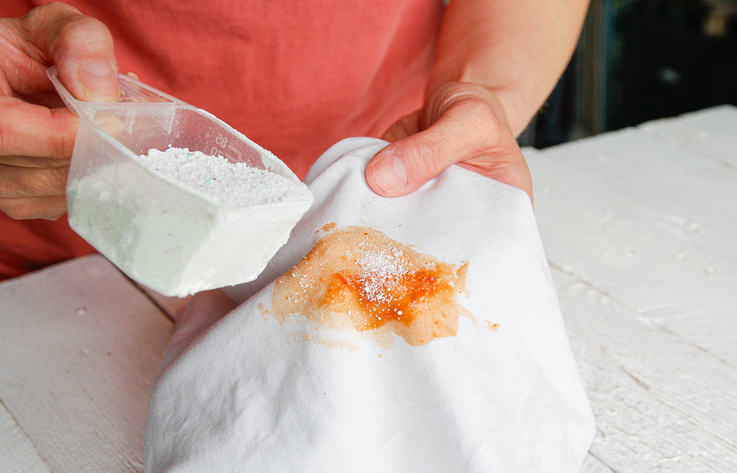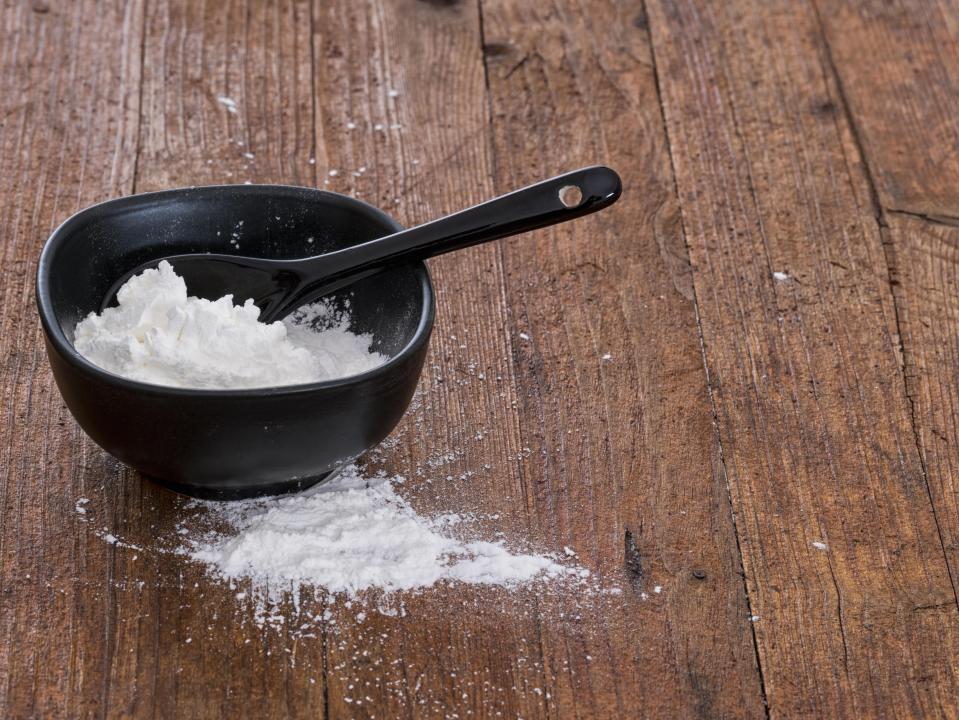THERE’S nothing worse than putting on a new top, only to discover a big oily stain.
Not only does it make your clothes unwearable, it’s also incredibly hard to get rid of, as it’s “hydrophobic”, meaning it repels water so is extra difficult for standard detergents to remove.
But one cleaning pro has insisted you don’t need to panic, as there’s a £1 kitchen cupboard staple you can use to get rid of it in seconds.
“Oily stains are common, but the good news is that a simple, food-safe product like cornflour can often remove them if treated promptly,” the Plumbworld expert explained.
“It’s affordable, non-toxic, and very easy to use at home.”
Cornflour works in three ways: absorbing excess oil and drawing it out the fibres, reducing the chance of the stain spreading by lifting the oil quickly, and preparing the item for washing, as it can be brushed off or washed away in your normal laundry routine.
Read more Laundry stories
It’s also a “gentle solution” to oily stains, meaning it’ll work a treat even on kids’ clothes – a lifesaver when it comes to messy summer barbecues.
To use cornflour as a stain remover, you need to follow five simple steps.
Firstly, act quickly – as soon as the spill happens, blot excess oil with a paper towel — but do NOT rub.
Then sprinkle a generous layer of cornstarch over the stain, covering it completely.
Leave it for 15 to 20 minutes, or 30 minutes for thicker stains.
Once the time is up, brush off the powder carefully with a soft brush or cloth.
The final step is to wash as usual, using your normal detergent.
Don’t have the cycle temperature up too high though, as warm water works best for oil removal.
“For set-in stains, you can repeat the process or combine cornflour with a small amount of gentle liquid detergent for a pre-wash treatment,” the expert added.
“Sometimes, the simplest solutions are the most effective. Cornstarch is a low-cost, easy, and safe way to tackle oily stains before they become permanent.
“For families, home cooks, or anyone prone to grease spills, this pantry staple is a must-have for maintaining spotless clothes.”
Laundry tips
Catherine Green, sustainable cleaning expert at smol shared her laundry tips.
How often should you be remaking your bed?
When it comes to your bed, maintaining a hygienic sleep setup can actually improve your sleep quality, helping you start every day better.
Most people shed 500 million skin cells per day and a lot of that ends up in bed for dust mites to feed on. And those with asthma or allergies might see symptoms worsen by sleeping on dirty sheets!
You want to be washing your sheets once a week – or every 10 days if you don’t suffer from allergies and wear nightclothes. Bedding builds up with sweat, skin cells and oils quickly, even if it doesn’t look dirty.
Using an effective detergent like smol’s will still give you a great clean on a 20°C cycle – that’s better for the planet and your energy bills!
What temperature do smol recommend then?
For your regular weekly washes I recommend washing most loads at 20°C for 30 minutes. It’s gentler on fabrics, slashes energy use, and still delivers excellent stain removal with the right detergent. A colder wash can actually be more effective if you opt for a bio detergent as its enzymes need cooler water; too hot and they lose their ability to digest stains. A wash at 60°c (unless you have silk sheets) every now and again can help kill off dust mites and other nasties.
What’s the difference between bio and non-bio detergent?
Bio detergents contain enzymes, which are especially good at breaking down tough stains like food, grass, or sweat. It’s best used in mid to low temperature washes (ideally between 20-40°C) as anything hotter can cause them not to work effectively.
Non-bio skips the enzymes, which in turn makes it more suitable for those with sensitive skin or allergies. Although non-bio doesn’t contain enzymes, it’s still great at removing stains and keeping your clothes clean, you just may need to use a slightly higher temperature setting to aid with the cleaning process.















